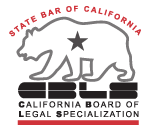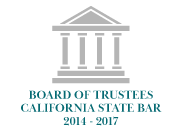No matter your estate’s value, you will want to include all of your assets in your estate plan. The process of estate planning includes naming those who will receive specific assets within your estate and identifying who will handle certain responsibilities in the event of your death or incapacity.
There are many reasons to develop an estate plan. A plan allow you to ensure that beneficiaries receive the assets according to your wishes and in a way that could potentially minimize estate, gift, or income taxes (depending upon how your estate plan is structured).
One of the first steps in developing an estate plan is creating an inventory of all tangible and intangible assets you own. Having an up-to-date inventory of all assets will make it easier for your executor to carry out their duties and ensure an orderly transfer of assets.
If you create a trust as part of your estate plan and fail to “title” certain assets into the name of the trust or include them in the inventory, it can lead to conflict between your beneficiaries. If the value of assets that are not addressed in your estate plan exceeds a specified value, this portion of your estate may also have to go to probate court – which is an outcome you are likely hoping to avoid by creating an estate plan.
To ensure that your estate plan is comprehensive, the first step is to complete an accurate inventory of all assets that you own. While many individuals believe they have few assets when they start working on an estate plan, the process of inventorying all assets will often reveal that you have far more to address than you initially thought.
It’s also important to recognize that you have both tangible and intangible assets. Tangible assets are physical assets or property. Intangible assets are non-physical assets – such as patents, trademarks, stocks and bonds – that still have a monetary value.
Since tangible assets are generally easier to identify, it is good to start with them when creating an inventory. You can create a list of all tangible assets, including their current estimated value.
Tangible assets would include:
- Homes or other real estate
- Undeveloped property
- Vehicles – including cars, motorcycles, and recreational vehicles
- Jewelry
- Artwork
- Collectibles, such as antiques or coins
- Other personal possessions, including furniture and household items
You can then move on to listing all intangible assets, including:
- Checking and savings accounts
- Certificates of deposit
- Stocks, bonds, mutual funds, and other investments
- Retirement plans, including 401(k)s, 402(b)s, deferred compensation accounts, and IRAs
- Life insurance policies
- The interest in any business you own (either entirely or in-part)
- Health savings accounts
- Patents
- Intellectual property
With intangible assets, you should also be sure to note their cash values and death benefits.
Once you have your inventory list with assigned values, it’s also a good idea to list all liabilities, including mortgages, lines of credit, personal loans, and other types of debt. If you have a safe deposit box where some of your tangible or intangible assets are stored, you will want to include the location and instructions for accessing its contents. You will also want to gather recent statements from your bank, brokerage firm, retirement account, and insurance policy documents. If you own real estate, a recent appraisal of all properties is also recommended.
Creating a detailed inventory can take time, but it is crucial to develop your estate plan. It ensures that you don’t leave any assets unaddressed or unassigned to a beneficiary upon your death or incapacitation.
Moreover, an inventory is essential for the executor of your estate to carry out their duties. This individual will be expected to locate all assets and assign them a value. An appraisal may be necessary for high-value items such as real estate holdings and expensive jewelry and artwork. Having an existing asset inventory provides a great starting point so that they can easily identify all of your assets and update the values.
When creating an inventory for your estate plan, it is easy to overlook or miss something. Many reputable and knowledgeable estate planning attorneys can provide a worksheet that will serve as your inventory foundation. These worksheets frequently group assets by type to help you consider all types of assets that may fall under specific categories.
Creating an inventory for your estate plan can be complex – especially if your estate is large. But it is a necessary step in developing a comprehensive estate plan. It may be a good idea to discuss your concerns with an experienced estate planning attorney before beginning on the inventory; they can often provide you with advice and guidance that can make the process easier for you.








